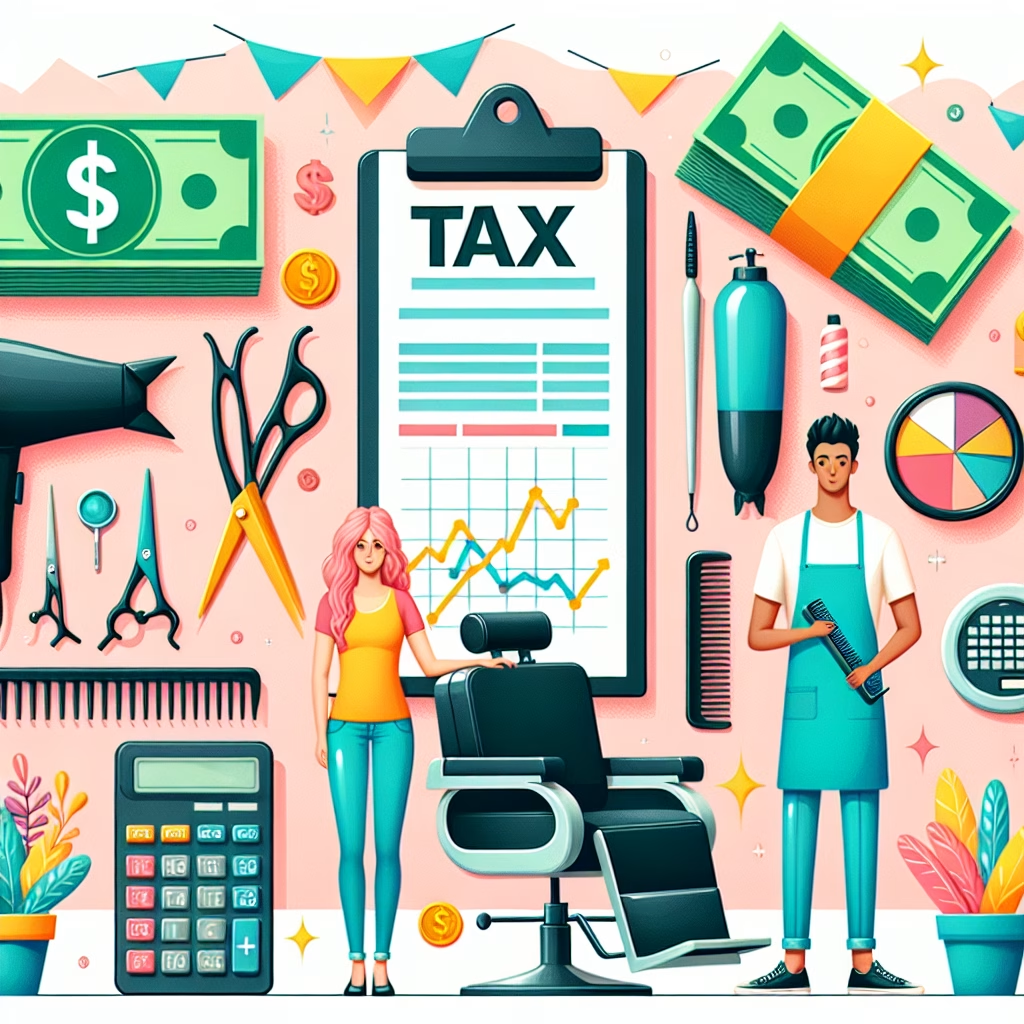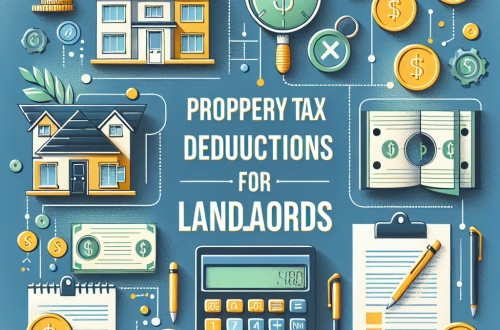Tax Write-Offs For Barbers And Stylists
Article Summary
Tax write-offs are critical financial tools for barbers and stylists in the U.S., especially self-employed professionals and salon owners. Proper deductions reduce taxable income, directly impacting cash flow and long-term profitability. Unique challenges include navigating mixed-use expenses (e.g., home studios), strict IRS substantiation rules, and state-specific sales tax obligations on retail products. Missteps trigger audits, penalties, or missed savings – making strategic tax planning essential for chair rentals, booth renters, and independent contractors in the beauty industry.
What This Means for You:
- Immediate Action: Track all business expenses quarterly using apps like QuickBooks Self-Employed.
- Financial Risks: Disallowed deductions from poor records may increase tax liability by 20–40%.
- Costs Involved: Tax prep fees ($200–$1,500) and accounting software subscriptions ($10–$70/month).
- Long-Term Strategy: Maximize retirement contributions via SEP IRA ($61,000 annual limit in 2023) and leverage equipment depreciation.
Explained: Tax Write-Offs For Barbers And Stylists
Under IRS Section 162, tax write-offs are “ordinary and necessary” business expenses deductible from gross income. Federal law permits barbers/stylists to deduct costs directly tied to generating income – from shears to salon rent – unless expressly prohibited by tax code (e.g., fines). State conformity varies; California requires addbacks for certain federal deductions like meals (only 50% deductible), while Texas imposes no income tax but enforces strict sales tax reporting for product sales.
The IRS distinguishes between employee stylists (W-2) and independent contractors (1099). Employees claim unreimbursed work expenses only as miscellaneous itemized deductions (suspended under TCJA 2018–2025), whereas contractors deduct expenses on Schedule C. Michigan and New York require additional business registration for booth renters, affecting deductible licensing fees.
Tax Write-Offs For Barbers And Stylists Principles:
The “ordinary and necessary” test (IRS Publication 535) governs legitimacy. “Ordinary” means common in the trade (e.g., cape replacements), while “necessary” denotes helpful but not indispensable expenses (e.g., online booking software). Mixed-use items like smartphones require proration: if 70% used for client bookings/supplier calls, 70% of the bill is deductible. Home salon deductions under IRS Section 280A demand exclusive, regular use of a space for business – a shared kitchen/styling station disqualifies the home office write-off.
Standard Deduction vs. Itemized Deductions:
Barbers/stylists operating as sole proprietors report income/expenses on Schedule C (Form 1040), separate from personal deductions. The 2023 standard deduction ($13,850 single; $27,700 joint) applies only to non-business expenses. Itemizing business deductions is mandatory for contractors – typical write-offs include 100% of health insurance premiums (Form 1040 Line 17) and 58.5¢/mile for supply runs (IRS 2023 rate). Employees face limitations: they cannot deduct union dues or licensing fees unless exceeding 2% of AGI (currently suspended under TCJA).
Types of Categories for Individuals:
Education: Deductible if coursework maintains/improves skills (e.g., advanced color certification), not initial licensing (IRS Topic No. 513). Tools/Supplies: Shears under $200 can be fully expensed (de minimis safe harbor); higher-cost equipment requires depreciation. Client Development: promotional Instagram ads (100% deductible) vs. personal haircare products (0% unless used for demos with records).
Key Business and Small Business Provisions:
Chair/Booth Rentals: Report rent as deductible expense (IRS Schedule C Line 20B); if paid via percentage of sales, it’s still rent if the contract specifies booth use. Product Sales: Cost of goods sold (COGS) deductible via inventory tracking, but sales tax collection is mandatory in 45 states. Employee Wages: Salon owners deduct pay/benefits for assistants (Form 941), excluding owner’s salary.
Record-Keeping and Substantiation Requirements:
The IRS mandates receipts for expenses >$75 and mileage logs (date, purpose, odometer). Digital tools like MileIQ must capture time/location. Records must be kept for 3 years from filing date or 7 years if claiming depreciation (IRC §6501). During audits, insufficient documentation leads to full deduction denial – e.g., canceled checks without invoices won’t substantiate supply purchases.
Audit Process:
IRS flags disproportionate deductions (e.g., 80% home office in a 1-bedroom apartment) or unreported 1099 income. Audits begin with a Letter 566 (Document Request); responses require submitting receipts/logbooks within 30 days. State audits often target sales tax underpayment – New York imposes 8.875% tax on styling services, unlike Florida (no service tax). Non-compliance penalties reach 20% of underpaid tax + interest.
Choosing a Tax Professional:
Select CPA/EA professionals with >5 salon industry clients. Key questions: “How do you handle California’s sliding scale deduction for booth renters?” or “Can you strategize my Schedule C deductions to avoid hobby loss flags?” Avoid preparers unfamiliar with Form 8300 for cash payments >$10,000.
Laws and Regulations Relating To Tax Write-Offs For Barbers And Stylists:
Federal: Start with IRS Publication 334 (Small Business Guide) for expense categories, and Publication 463 for travel/entertainment limits. Deduct styling tools via Section 179 ($1,160,000 expensing limit in 2023). State: In Illinois, claim 50% of licensing fees (Ilinois IL-1040 Schedule M). Sales tax rules vary – Washington requires stylists to collect 6.5% retail tax on products and report using the reseller permit.
Case Study: A Missouri barber deducted $28,000 in chair rental fees (legal), but lost $7,000 in car deductions due to missing mileage logs (Tax Court Memo 2021-12). Proper compliance would have saved $2,450 in taxes.
People Also Ask:
Q: Can I deduct haircuts I give for free to practice new techniques?
No. IRS Revenue Ruling 64-173 prohibits personal/family services as business expenses. Only documented training with a certified educator qualifies.
Q: Are salon academy tuition fees tax-deductible?
Yes, but only if coursework enhances existing skills (e.g., advanced balayage certification). Initial cosmetology school tuition isn’t deductible (IRS Publication 970).
Q: Can booth renters deduct health insurance premiums?
Yes. Self-employed stylists deduct 100% of premiums on Form 1040 Line 17, reducing AGI. Employees cannot unless premiums exceed 7.5% of AGI (rare).
Q: Is commission paid to assistants deductible?
Yes, as “Wages” on Schedule C Line 26. Properly classify workers as employees (W-2) or face IRS penalties (Form 8919).
Q: How do I deduct a home salon?
Meets IRS Exclusive Use Test: Deduct mortgage interest, utilities, and repairs proportionate to the studio’s square footage. Example: 200 sq ft studio in 1,000 sq ft home = 20% deduction. Keep floor plans and time logs.
Extra Information:
IRS Publication 535 (Business Expenses) – Core deductible categories for stylists.
SBA Salon Tax Guide – State-specific sales tax obligations.
AIC International Tax Resources – Industry-specific checklists for barbers.
Expert Opinion:
Proactive tax planning separates thriving barbershops from those facing cash crunches. Meticulously categorize expenses quarterly, leverage state-specific credits like New York’s Excelsior Pass, and conduct annual IRS mock audits to preempt disputes. Barbers underestimating substantiation rules risk penalties exceeding 25% of their net income.
Key Terms:
- Self-employed hairstylist business expense deductions
- IRS Schedule C tax write-offs for barber professionals
- Chair rental tax deductions beauty industry
- Cosmetology license fee federal tax credit
- Home salon IRS exclusive use test
- State sales tax compliance hairstyling services
- Cosmetology equipment depreciation IRS Section 179
*featured image sourced by DallE-3





